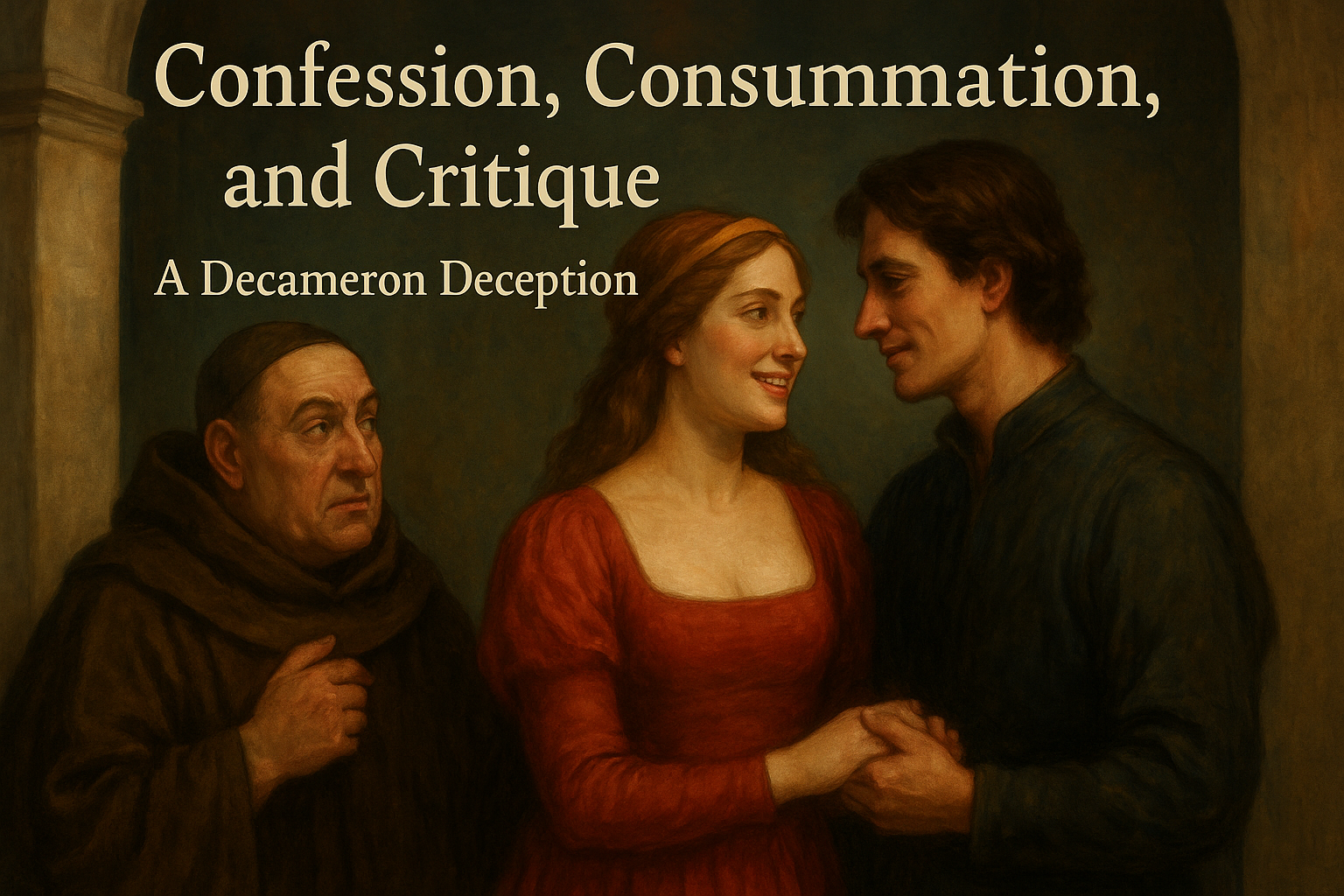"Confession, Consummation, and Critique: A Decameron Deception"

Introduction
This story from Boccaccio's Decameron is a clever tale about a woman who cheats on her husband. It's not just a story about romance; it's also a funny look at how people, especially priests, can be tricked. The story shows how a woman uses her wits to get what she wants, and it makes fun of the Church and the social rules of the time. We'll look at how the story uses humor and irony to show the problems with power, greed, and the way people lived then and how that still relates to today.
Summary
A rich woman is married to a man she doesn't like. He's rich, but she finds him unattractive and unpleasant. She wants to have an affair with a handsome nobleman. She uses a friendly Friar to help her. The Friar is easily fooled because he's greedy and wants money. The woman pretends to confess her "sins" to the Friar, but actually, she uses this to set up meetings with her secret lover. She gives the Friar gifts so he keeps helping her hide her affair from her husband. The woman and her lover finally get together secretly, laughing at the silly Friar and the woman's husband for being so easily fooled.
Analysis
The story is really funny because it shows how easily people can be tricked. The Friar, a religious leader, is shown to be greedy and not very smart. Boccaccio uses this to make fun of the Church. He shows how religious leaders weren't always as good or smart as they pretended to be. This part of the story still feels relevant today, as many people still distrust religious leaders because of scandals or bad behavior.
The story also shows the power imbalance between men and women at the time. The woman is stuck in a marriage she doesn't want. She has no real power in her marriage, but she finds a way to take control of her own life and happiness, even if it's by sneaking around. It's clever how she uses the rules of confession and the Friar's greed to help herself. She outsmarts the men in her life, which was unusual for women of her time.
The story also comments on class. The woman is high class, but her husband is considered lower-class, even though he's rich. The fact that she's unhappy with him shows that even having a lot of money doesn't mean you have status or a good life. The nobleman she chooses is of a higher social class, which shows her interest in social standing as well. This part of the story helps us understand how class and status mattered to people a long time ago.
Personal Response
I found this story to be entertaining and insightful. The humor is witty and effective, and it keeps you wanting to know what happens next. The woman's intelligence is admirable, and it's satisfying to see her outsmart the men who try to control her. The story also made me think about how much has (and hasn't) changed concerning the balance of power between men and women, and the way religion can be used or misused.
Conclusion
Boccaccio's tale is more than just a funny story. It cleverly shows the problems with the Church, the unfair way women were treated, and the importance of class in the past. The story is still relevant today because it makes us think about how people use power, how we trick ourselves, and how we try to get what we want in our lives. The way the woman in the story finds a way to take control of her own life, even in a difficult situation, is interesting and relevant to people even today. The use of humor makes the important points of the story more engaging and memorable for the reader.








